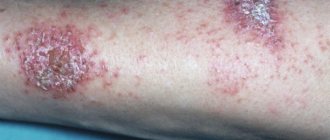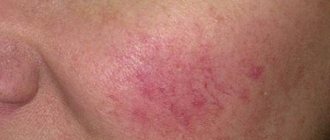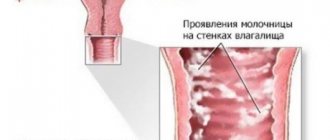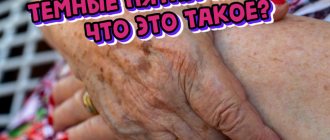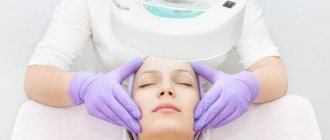Dermatoses are a large group of heterogeneous diseases of the skin and its appendages of various origins (infectious, allergic, immune, etc.), caused by both external and internal (endogenous) causes. This group does not include transient changes in the skin that accompany many diseases and conditions.
Dermatosis is a skin disease
Currently, the International Classification of Diseases describes about 2.3 thousand pathologies belonging to the group of dermatoses. This diversity can be explained by the following reasons:
- the anatomical complexity of the skin (consists of the epidermis, dermis, subcutaneous fat, sweat and sebaceous glands), each of the elements of which can be involved in the pathological process, either alone or in combination with other structures;
- the specific structure of the skin in different parts of the body (keratinizing, non-keratinizing epithelium, areas with extensive hair or accumulation of sweat glands, etc.);
- accessibility to dynamic observation without special technical means, which makes it possible to note the slightest differences in painful manifestations;
- exposure to a variety of environmental agents acting as provocateurs or factors contributing to changes in the course of the disease.
Causes and risk factors
All etiological factors that can be triggers of inflammation of the skin are conditionally divided into 2 groups: endogenous (internal) and exogenous (external).
Dermatoses are accompanied by significant subjective sensations, cosmetic defects, limit the patient’s activity and negatively affect the quality of life.
The most common external causes:
- physical factors of influence (mechanical friction, systematic or one-time extreme temperature effects, ultraviolet or ionizing radiation, exposure to electric current, injuries);
- chemicals that can cause disease both through direct contact with the skin and when ingested (aggressive household chemicals, cosmetics, industrial hazards, allergens, medicines, food, etc.);
- biological (bacteria, viruses, protozoa, arthropods, fungi, etc.).
Dermatosis may be caused by skin contact with household chemicals
Usually, for the development of dermatosis, a combination of several factors is necessary: the presence of a provocateur, weakening of local skin protection, failure of the immune response to aggressive influence, etc. However, sometimes even an isolated exposure can provoke a skin disease (for example, a burn or frostbite).
Internal reasons:
- local chronic focus of infection (chronic tonsillitis, pyelonephritis, carious teeth, etc.);
- chronic diseases of internal organs that neutralize and eliminate toxins (for example, erythema of the feet and palms due to liver disease);
- disorders of protein, mineral, carbohydrate metabolism;
- regional blood flow disorders, local microcirculation defects;
- hypovitaminosis;
- lymphatic drainage disorders;
- diseases of the nervous system (both central and peripheral) or functional disorders;
- endocrine pathology;
- metastasis to the skin in malignant neoplasms;
- diseases of the hematopoietic system;
- genetic defect, hereditary predisposition;
- immunosuppression.
Sometimes the cause of dermatosis remains unclear, in which case it is called idiopathic.
Development mechanism
Itchy allergic dermatoses develop under the influence of allergens that enter the body through the skin or mucous membranes. After the first encounter with a foreign substance, the immune cells of the dermis “remember” it, which does not appear outwardly. This process of preparing the immune system is called sensitization.
When the allergen re-enters the sensitized body, an immediate allergic reaction develops in a matter of minutes. Immune cells release biologically active granules that cause local swelling, blood stagnation and itching. Thus, they limit the spread of a foreign agent through tissues, “locking” it at the point of contact.
With itchy dermatoses, the process occurs in the epidermis, which is manifested by the appearance of itchy blisters. Edema raises the epithelium, dilated vessels give it a red color, and histamine, the main mediator of the allergic reaction, interacts with pain receptors and causes itching. After the acute reaction subsides, the second mechanism is activated - delayed-type hypersensitivity. It supports the pathological process for months and even years.
Forms
Based on their origin, all dermatoses are divided into 2 categories:
- congenital (developed during pregnancy under the influence of various embryotoxic and teratogenic factors or genetically mediated);
- acquired.
The clinical classification of dermatoses is extensive. According to ICD-10, there are several groups, each of which includes many forms of diseases:
- infections of the skin and subcutaneous tissue;
- bullous disorders;
- dermatitis and eczema;
- papulosquamous disorders;
- urticaria and erythema;
- diseases associated with exposure to ionizing radiation;
- other diseases of the skin and subcutaneous tissue.
Currently, the International Classification of Diseases describes about 2.3 thousand pathologies belonging to the group of dermatoses.
Some authors propose alternative classifications of dermatoses that take into account the etiological factor:
- pyoderma or pustular skin lesions - furunculosis, sycosis, carbuncle, impetigo, etc. More often provoked by staphylo- or streptococci, their combined effects;
- fungal infections or mycoses - trichophytosis, epidermatophytosis, lichen, candidiasis;
- parasitic dermatoses – pediculosis, scabies, demodicosis;
- infectious – leprosy, skin tuberculosis, borreliosis;
- viral dermatoses - herpes infection, chickenpox and simplex, molluscum contagiosum;
- genetically determined skin diseases - ichthyosis, neurofibromatosis, epidermolysis, xeroderma;
- allergic dermatoses – urticaria, toxicoderma, eczema;
- neurodermatoses - sometimes combined with allergic ones in the group of itchy dermatoses;
- common connective tissue diseases, collagenoses - periarteritis, scleroderma, systemic lupus erythematosus, sclerema;
- dermatitis, acute processes - thermal damage to the skin, diaper, allergic, contact dermatitis;
- autoimmune dermatoses;
- bullous [vesicular (vesical)] dermatoses;
- erythema (abnormal hyperemia of the skin);
- vasculitis (vascular pathology);
- papulosquamous dermatoses – psoriasis, parapsoriasis, lichen planus;
- reticuloendotheliosis;
- dyschromia (pigmentation disorders) – vitiligo, lentigo, chloasma, photodermatoses;
- tropical dermatoses – yaws, rocky mountain fever;
- benign and malignant skin tumors;
- traumatic dermatoses;
- occupational skin diseases;
- dermatoses associated with disruption of trophic processes;
- metabolic diseases;
- other dermatoses.
What do dermatoses look like?
In addition to what has been presented, a lot of attempts are being made to systematize skin diseases based on various prerequisites: the primacy or secondary nature of the process, its stability, severity, predominant primary elements, etc.
More about eczema
Eczema is an inflammatory skin disease that causes itchy, moist rashes. It occurs under the influence of various irritating factors against the background of a predisposition formed as a result of changes in the immune system. As a result, the body begins to react abnormally to the action of irritants, which is clinically manifested by skin rashes.
Classification and types of eczema:
- true;
- professional;
- microbial;
- fungal;
- varicose;
- seborrheic.
At the onset of the disease, local redness and swelling are noted on the skin. Then bubbles with serous contents appear. They burst, the liquid flows out and forms a wet surface with cracks. After a while, the affected areas dry out and form crusts, after peeling off which healthy skin remains. But in parallel, new rashes may appear, prolonging the course of eczema. And if it is not treated, the disease will become chronic with frequent relapses in the form of new episodes of the disease. At the same time, the skin gradually thickens, peels off, and even during periods of remission does not look the same as before.
Symptoms of dermatoses
Symptoms of dermatoses can be very diverse, but all diseases have a common feature - changes in the structural elements of the skin.
In total, there are 8 varieties of primary elements characteristic of certain dermatoses.
Voidless primary elements:
- spot - an element that does not rise above the skin level, characterized by local limited dyschromia of the skin. Usually it resolves without a trace, although in some cases it can persist for a long time. Transforms into scales or a secondary pigment spot;
- A blister is a rapidly evolving element that is a swelling of the papillary dermis, rising above the level of the skin. Resolved without a trace;
- papule - an element that rises above the level of the skin, evolving into scales, a secondary spot, or a crack. Resolved without a trace;
- tubercle. It rises above the level of the skin, transforms into scales, ulcers, crusts, and resolves with a scar or cicatricial atrophy;
- node - an element rising above the skin level, transforming into an ulcer, crust, scar, secondary spot. Resolves with a scar or disappears without a trace.
Cavity:
- vesicle – a limited formation up to 5 mm in diameter. Goes through the stages of erosion, crust, scales, secondary pigment spot, resolves without a trace;
- bubble – an element with a diameter of more than 5 mm. Rise above the skin level, transform into erosion, crust, scales, secondary pigment spot, resolve without a trace or as a scar;
- pustule - a raised formation filled with purulent contents. Transforms into a crust, erosion, secondary pigment spot, ulcer, scar, vegetation.
Idiopathic dermatosis is the name for which the cause cannot be determined.
The most common skin diseases encountered in dermatological practice are:
- itchy dermatoses (urticaria, neurodermatitis, prurigo, pityriasis rosea, etc.). A characteristic feature is skin itching, which can be an isolated sign of the disease, or be combined with other symptoms, be a precursor to the main skin manifestations or accompany them;
- infectious, characterized by active inflammatory changes in the skin and occurring with the formation of pustules, vesicles, and nodules. Treatment of dermatoses caused by infectious agents requires the mandatory use of drugs aimed at destroying the causative agent of the disease. After the process has resolved, scar or pigment changes may remain in place of the primary elements;
- fungal dermatoses, which are a type of infectious. They tend to chronicize the process and gradually expand the affected area;
- viral dermatoses provoked by herpes viruses, poxyviruses, human papillomaviruses are also a type of infectious dermatoses, characterized by a long-term (sometimes lifelong) persistent course;
- allergic dermatoses, characterized by rapid manifestation, transience (although sometimes they can be protracted, difficult to treat), wave-like course with a return of symptoms after contact with the allergen. Characteristic is an increase in symptoms of dermatosis with each subsequent exposure to a provocateur, up to anaphylactic shock and Quincke's edema.
Generalized pruritic dermatosis manifests itself as skin itching
Pathogenesis of the disease
The repeated entry of a certain allergen triggers a pathological immune process, leading to damage to the dermis. Sensitized T lymphocytes migrate to the site of antigen introduction or deposition.
They secrete lymphokines - special active substances that serve to attract other classes of lymphocytes, macrophages, and polymorphonuclear leukocytes. As a result, a focus of inflammation is formed in the dermis, which is the cause of the appearance of the main symptoms of allergic dermatosis.
This mechanism for the development of hypersensitivity is called a delayed-type reaction. Inflammatory mediators entering the bloodstream can lead to reactions from other organs and a systemic allergic response.
In atopy, the pathogenetic mechanisms are somewhat different. The circulation of excess amounts of Ig E is combined with a decrease in the number and activity of T-suppressors - lymphocytes that perform a regulatory function.
Such disorders are supported by the existing autonomic imbalance, which activates the synthesis of new immunoglobulins of class E. These antibodies bind to macrophages, basophils, mast cells and monocytes in the deep layers of the skin and other tissues, and an inflammatory reaction with a tendency to protracted course is triggered.
In the case of severe toxicoderma, immunologically mediated damage to the deep layers of the dermis occurs with the formation of extensive blisters (bullas) that peel off the skin. The same disturbances are observed in the walls of hollow organs.
Diagnostics
The type of dermatosis is determined based on an assessment of the condition of the skin, which includes:
- visual examination (assessment of the nature of skin elements, their prevalence, degree of severity of the process, preferential locations);
- diascopy (vitopression);
- determination of the nature of the skin's reaction to irritants (Koebner phenomenon);
- assessment of the type and nature of dermographism;
- assessment of the density of skin elements;
- luminescent examination of the skin;
- capillaroscopy.
Localization location
Localization of local dermatitis:
- Movable body parts.
- Areas with delicate skin.
- Exposed body parts.
If local itching develops against the background of sexually transmitted, gynecological and andrological diseases, then it may be located in the area:
- Legs, thighs, buttocks and crotches.
- Anus.
- Genital organs.
Below are photos:
Treatment of dermatoses
The treatment tactics for dermatosis are related to its form, the nature of damage to the skin, and are carried out in several stages. The rationality of therapy determines the successful outcome of the disease, since dermatoses, as a rule, are accompanied by significant subjective sensations, cosmetic defects, limit the patient’s activity and significantly affect the quality of life.
Initially, the etiological factor is identified, based on which etiotropic therapy is selected:
- antifungal agents;
- antiviral;
- antimicrobial;
- antibacterial;
- antiparasitic;
- antihistamines (for allergic dermatoses); etc.
Treatment of dermatosis depends on the etiological factor
Subsequently, symptomatic treatment is carried out. The following groups of drugs are prescribed:
- keratolytic;
- keratoplasty;
- cauterizing;
- drying;
- anti-inflammatory;
- antipruritic;
- decongestants;
- angioprotectors;
- metabolic;
- detoxification;
- vitamin and mineral complexes;
- general strengthening; and etc.
When treating dermatoses, certain rules and sequence of use of drugs are followed, depending on the severity of the process, the degree of its severity, the presence of weeping lesions or keratinization, etc.
Symptoms of dermatoses can be very diverse, but all diseases have a common feature - changes in the structural elements of the skin.
Treatment of dermatoses is complex: in addition to pharmacotherapy, physiotherapeutic methods, diet therapy, treatment of concomitant somatic pathologies, sanatorium treatment are used, and in some cases rational psychotherapeutic influence is used.
ethnoscience
Drug therapy for skin diseases can be supplemented with treatment with folk remedies.
Bullous dermatoses and other skin rashes can be treated with herbal remedies that have anti-inflammatory, antiallergic and reparative effects. Traditional methods are used only as a supplement to basic drug therapy. Such collections usually include knotweed, tricolor violet, oats, juniper, string, and agrimony. Dermatozoonoses can be eliminated with the juice of fresh parsley, a strong decoction of mint, and compresses of grated raw potatoes.
Many skin pathologies, for example, paraneoplastic dermatoses caused by neoplasms, are accompanied by weakened immunity. In these cases, Eleutherococcus, Aralia, and Leuzea are prescribed.
To relieve intoxication, it is recommended to use products such as milk thistle-based silybor and convaflavin from lily of the valley. To relieve external symptoms - propolis ointment, dermatosol. Blistering dermatosis with local rashes, irrigated with a decoction of belladonna.
Parasitic dermatoses are treated with lotions made from essential oils (lavender, sandalwood, rosemary and cloves in equal parts). Mustard oil mixed with garlic helps a lot. Mix 0.5 liters of mustard oil with 100 g of grated garlic, cook for about 20 minutes. Strain the resulting mixture and use it as compresses on the affected area.
Source: netrodinkam.ru
conclusions
It is necessary to pay due attention to patients complaining of skin itching and conduct a thorough differential diagnosis to identify the causes of itching.
Among antihistamines, sehifenadine is a priority compared to drugs of the first and second generation ( Gistafen
), which has a pronounced antipruritic effect, has a high safety profile due to the selectivity of action and the absence of a sedative effect.
Histaphene
is a drug that has been proven to reduce the concentration of histamine in the blood serum, which is extremely important in the treatment of diseases accompanied by systemic itching.
with Histaphen seems promising
and
Adaptolom
.
The anti-anxiety activity of Adaptol
and its good tolerability in combination with dermatological agents make it possible to recommend it to improve the quality of life in chronic dermatoses (including skin itching) accompanied by anxiety disorders.
Prevention
Any dermatological disease can be the result of insufficient personal hygiene. Therefore, if there are even minor injuries on the skin, mandatory treatment with antiseptics is required.
If the disease does develop, then timely diagnosis and the appointment of competent treatment to eliminate the symptoms and causes of the disease are important.
Most of us do not consider dermatoses a dangerous disease, thinking that they only affect the skin. However, this is not the case, since quite often they can create great discomfort for a person.
It is also necessary to take into account that in the absence of therapeutic measures, this disease can lead to certain complications. In this case, treatment will take longer and create a lot of problems for the patient.
For this reason, it is important to consult a doctor at the first signs, avoiding the uncontrolled development of dermatosis. Only with surgical intervention in the process can a speedy recovery be achieved.
Source: dermatolog.guru

